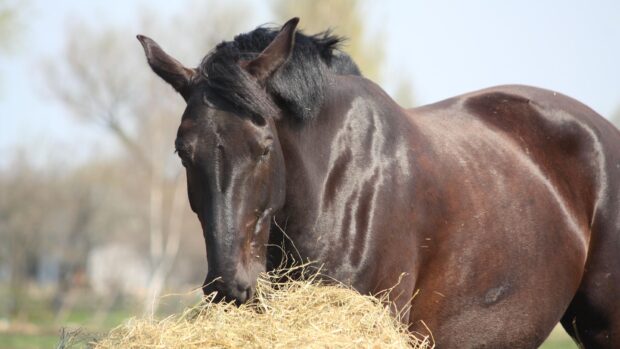It is mid-June, and the grass is still growing fast, particularly since what sunshine we have is matched equally by rain.
And there is nothing that encourages grass to grow more than sunshine and moisture.
A friend’s event horse, although ostensibly eating the same food, has put on weight during the past month, become wicked to ride and takes ages to work in.
The last thing she suspected was the grass, because even in May the paddock still looked bare and poached in places.
But the horse’s diet had changed, the grass had started to grow in earnest and he was eating the new growth as fast as it appeared.
My friend had not realised that, while she had been mowing her lawn since mid April, her horse was doing the equivalent in the field.
Grass is, in many ways our cheapest feed, but we mistrust it because it’s so variable. Its growth is about five times faster in May and June than in September and energy and protein levels are at their greatest at this time.
Well-managed grass can support about three horses an acre, while, in September, this reduces to less than one horse an acre.
As regards other nutrients, UK pastures are generally rich in calcium and phosphorus. The exception is pasture on thin, acid soil with poor-quality grasses, such as in upland or moorland areas.
Vitamins are also generally well supplied, but in certain areas, such as the Welsh borders and the North-East, soils are known for being low in copper and selenium.
It’s not only grass that you have to manage; weeds are always lurking. Your paddocks are at risk of weed growth if your pasture management is poor – bare soil, caused by poaching or other hoof damage, is likely to be colonised by weeds before the grass gets there.
Pasture factfile
- Spring grass has more energy than your average competition feed – and twice the protein. If a horse stops eating hay and starts eating grass, it can consume about 15% more energy.
- A fat or laminitic pony needs only limited grass. For turn-out pastures for working horses and for mares and foals, aim for a 3in-high dense, leafy sward to provide nutrition as well as protection from concussion should they run about.
- Young stock also need thick mass of leaves to provide both nutrition and a mat to prevent jarring.
- Soil scientists believe that applying traceelements to the soil, such as in calcified seaweed, in an effort to improve their levels in grass is a waste of time. Frankly, if you want to get a trace element into a horse, it’s far more efficient to feed the horse directly, rather than feed the grass to feed the horse. Some people swear by these products for “sweetening” their grass.
- Should the unbelievable happen and we have a drought this summer, supplement horses at grass with vitamins and minerals, as the pasture supply will run out and the horse will not have adequate body stores.



